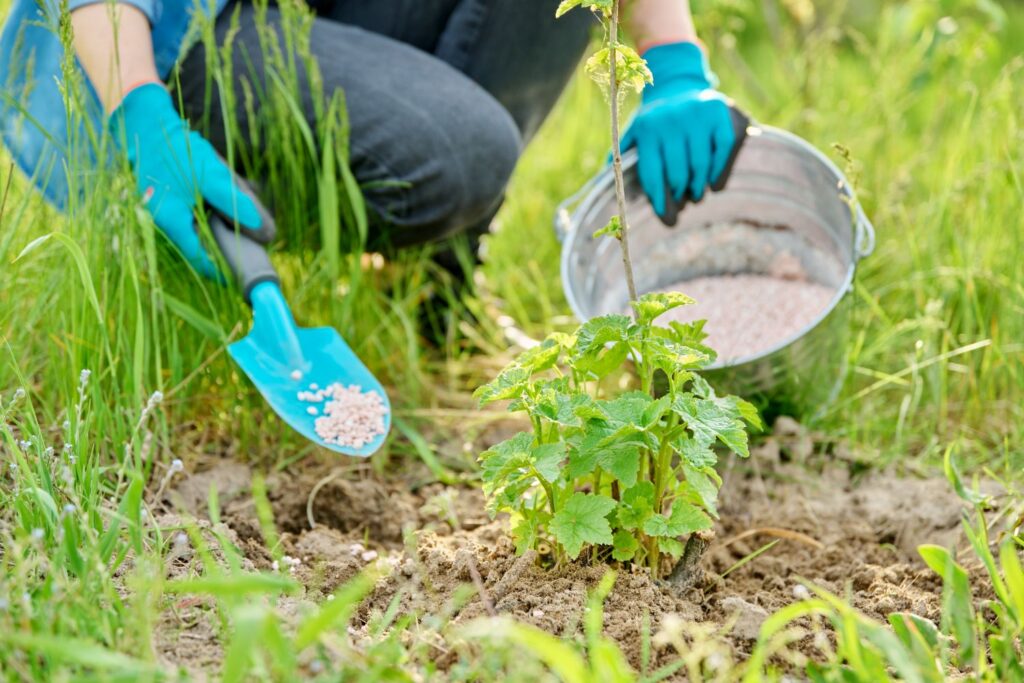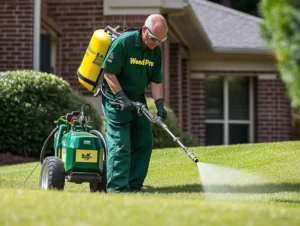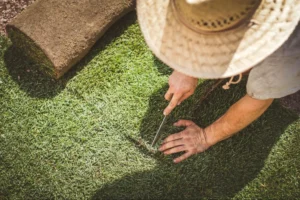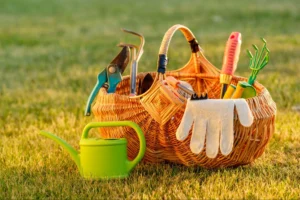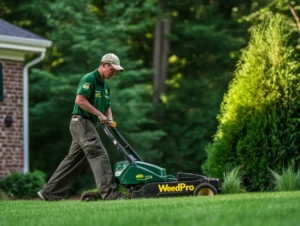Let’s talk turf—specifically, what it really takes to turn your Alpharetta lawn into a lush, envy-inducing oasis. Spoiler alert: it’s not about buying the fanciest bag or dumping more product on the grass. The secret is in the science—understanding what’s inside your lawn fertilizer and how each nutrient supports your lawn’s health and growth.
Whether you’re new to lawn care or just tired of guessing what “15-15-15” means, this lawn nutrition guide breaks it all down. By the end, you’ll understand your seasonal fertilizer needs, how to choose a balanced fertilizer, and how Weed Pro can make the process easy (and way less confusing).
Let’s dive into the world of nitrogen, phosphorus, potassium, and more—without the jargon overload.
Understanding the N-P-K: What’s on That Fertilizer Label Anyway?
Flip over any bag of lawn fertilizer, and you’ll see three numbers like 10-10-10 or 32-0-4. These refer to the N-P-K ratio, which stands for:
- N = Nitrogen
- P = Phosphorus
- K = Potassium
This trio of nutrients is the backbone of healthy lawns, but each plays a very different role.
Nitrogen: The “Green-Up” King
Nitrogen is the rockstar of lawn care. It’s responsible for lush, green blades and strong leaf growth. If your lawn looks pale or yellowish, it’s probably crying out for nitrogen.
Signs of Nitrogen Deficiency:
- Slow growth
- Yellowing blades
- Thin patches
When to Use It:
Spring and early summer are prime times for nitrogen applications in Alpharetta, especially for warm-season grasses like Bermuda and Zoysia. But beware—too much nitrogen can backfire, leading to weak roots and high maintenance.
Phosphorus: Fuel for Roots
Phosphorus works behind the scenes. It helps with root development, seedling strength, and early growth. It’s especially important for new lawns or overseeding projects.
Signs of Phosphorus Deficiency:
- Poor seed germination
- Stunted root growth
- Slow recovery after stress or mowing
Pro Tip:
Due to environmental concerns, many regions (including parts of Georgia) regulate phosphorus use. That’s why soil testing is so important—so you don’t apply it unless you actually need it.
Potassium: Lawn Armor
Potassium builds resistance. Think of it as the immune booster of lawn nutrients—it helps grass fend off drought, heat, and disease.
Signs of Potassium Deficiency:
- Leaf discoloration or spotting
- Weak resistance to stress
- Patchy growth during extreme weather
If your lawn suffers during Alpharetta’s hot, humid summers, potassium can help it bounce back faster.
What’s a Balanced Fertilizer—and When Should You Use One?
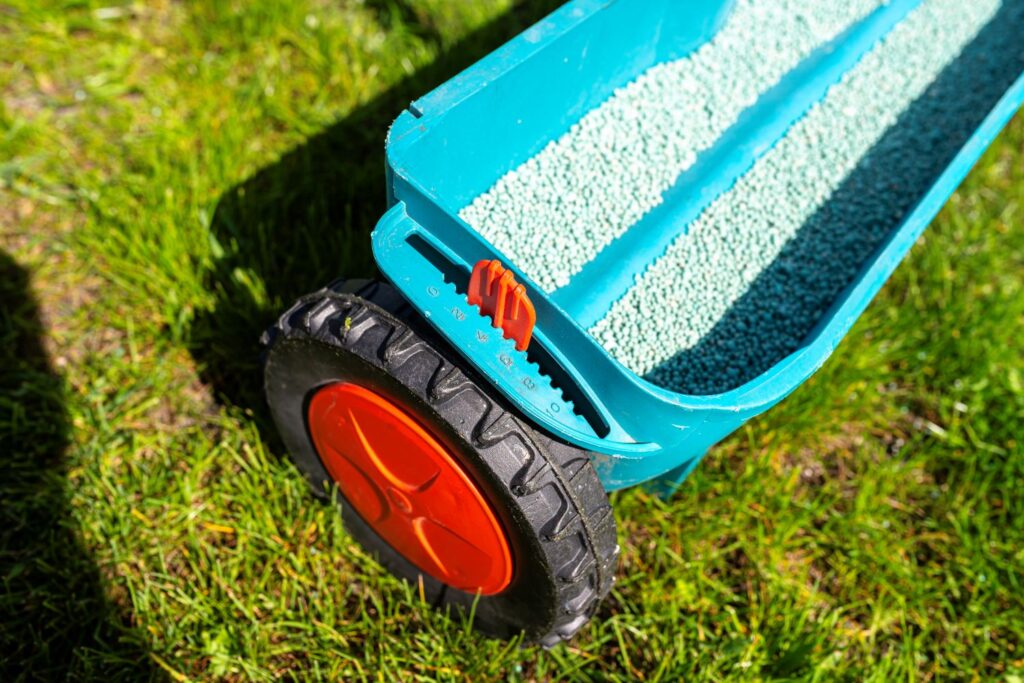
A balanced fertilizer contains equal or nearly equal amounts of nitrogen, phosphorus, and potassium (e.g., 10-10-10). These are great for general feeding or when you’re unsure what your lawn needs.
But here’s the thing: not every lawn needs everything in equal amounts. That’s where fertilizer labels and soil testing come in handy. For example:
- A well-established lawn might only need nitrogen and potassium.
- A newly seeded yard might benefit more from higher phosphorus.
- A lawn recovering from stress might need extra potassium.
Micronutrients: The Unsung Heroes
Beyond the big three, your lawn also needs tiny doses of micronutrients like:
- Iron: Helps keep grass green without boosting growth
- Calcium: Strengthens cell walls
- Magnesium & Sulfur: Support photosynthesis and enzyme function
Many premium fertilizers include these, or you can add them through soil conditioners or compost. While not always necessary, they can make a big difference in overall turf growth and vitality.
Seasonal Fertilizer Needs for Alpharetta Lawns
In Alpharetta’s climate, timing your fertilizer applications is crucial. Here’s a simple lawn care routine for warm-season grasses:
Spring (March-May)
- Kickstart growth with a nitrogen-rich blend
- Use a lawn fertilizer with slow-release nitrogen to avoid burning
- Optional: Add phosphorus if seeding or repairing thin areas
Early Summer (June–July)
- Reapply nitrogen to maintain color and thickness
- Add potassium to prep for heat stress
- Avoid fertilizing during extreme heat waves
Fall (September–October)
- Shift to a potassium-heavy mix for root health
- Phosphorus may help with fall overseeding
- Avoid nitrogen-heavy formulas as grass prepares to go dormant
Always adjust based on actual lawn performance and soil nutrient levels.
Top Mistakes to Avoid When Fertilizing
Before we wrap up, here are a few no-nos to steer clear of:
- Skipping soil testing (yes, again—we’ll keep saying it!)
- Ignoring fertilizer labels and applying too much
- Fertilizing right before rain (hello, runoff)
- Using the same product year-round without reassessing needs
- Fertilizing dormant grass, which can waste money and cause damage
Avoid these, and you’re already miles ahead of most DIYers.
Let Weed Pro Build the Perfect Lawn Fertilizer Plan for You

Still not sure whether your lawn needs more nitrogen or if you should switch to a slow-release blend this season? That’s okay. Lawn nutrition shouldn’t be stressful—it should be strategic.
At Weed Pro, we do the heavy lifting so you can enjoy your weekends and your green lawn. From soil testing to custom fertilizer schedules, we help Alpharetta homeowners grow healthy, stress-free lawns—no guesswork required.
Let’s build a lawn you’ll love from the soil up. Contact Weed Pro today for your personalized lawn nutrition plan.
❓FAQ: Beyond the Basics of Lawn Nutrition
Can you use the same fertilizer you use on your garden for your lawn?
Technically, you can, but you probably shouldn’t. Fertilizers for vegetable gardens often have different N-P-K ratios and may include ingredients that promote flowering or fruiting—not ideal for turf. Lawn-specific formulas are designed for grass growth and root health, making them a better match for your yard’s needs.
What if my lawn is half sun and half shade—do you need different fertilizers?
Not necessarily, but you might need to adjust application amounts. Grass in shaded areas grows more slowly and may not need as much nitrogen. Keep an eye on performance and consider reducing the rate in those zones to prevent overstimulation or fungal issues.
Next Up: Mastering the Fertilizer-Weed Control Combo
Now that you know which nutrients your lawn craves, it’s time to talk strategy. Want to feed your grass and fight weeds without wreaking havoc on your yard? Don’t miss our next article, How to Pair Lawn Fertilizer with Weed Control Without Doing Damage. It’s packed with tips to help you fertilize smarter and stay weed-free!

